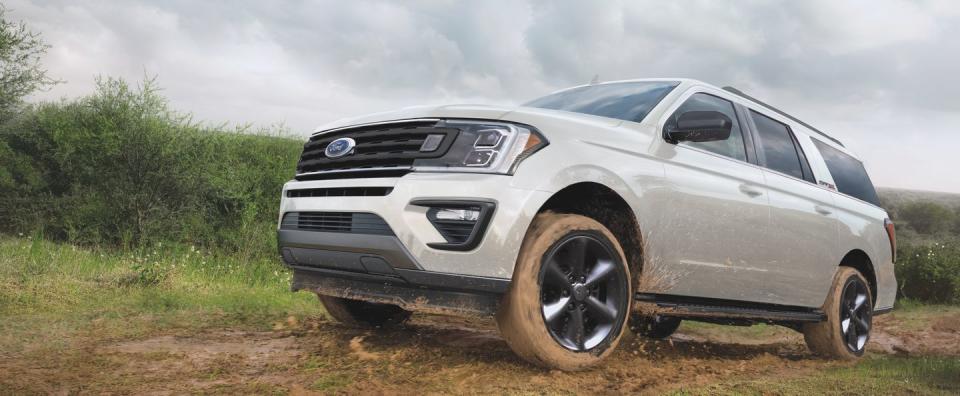America’s Auto Fleet Makes Efficiency Gains

The EPA Automotive Trends Report details how CO2 emissions have fallen and fuel efficiency has improved overall in 2020, but the numbers will remain flat for 2021.
Much of the stalled improvements are due to a continued shift in consumer buying habits, with truck-based SUV sales up 39 percent and car-based SUVs up 13 percent since 2013.
Some groups say the improvements aren’t enough, and that 2020 model-year vehicles fell short of the 4.3 percent efficiency improvements targeted in federal standards.
Depending on how you look at it, there are bright spots in the 2021 EPA Automotive Trends Report, released November 19. In 2020, the average estimated real-world carbon dioxide (CO2) emission rate for all new vehicles in the United States fell to 349 grams per mile (down seven grams). That was the lowest result ever measured by the agency.
Meanwhile, fuel economy increased to 25.4 mpg, up 0.5. Again, it was a record high. But there are significant caveats. The report also says that CO2 emissions and fuel economy in 2021 “will remain near the levels achieved in 2020.” Why is that, when we’re supposedly making progress to address climate change? The report notes that “market shifts away from cars and towards sport-utility vehicles and pickups have offset some of the fleetwide benefits.” In other words, the cars on dealer lots are getting bigger, heavier, and more powerful, and that’s offsetting what would otherwise be significant efficiency gains.
The good news is that, overall according to the report, average new vehicle fuel economy has increased 32 percent since 2004. That’s as horsepower increased 17 percent and weight was up one percent. Looking at the categories, though, minivans and vans, car-based SUVs, station wagons and sedans all saw a 0.9 mpg increase, but truck-based SUVs saw only a 0.3 mpg gain.
The consumer trends are clear. According to the EPA sedans and wagons fell to 31 percent of the market—a long fall from the 50 percent share they had in 2013 (or the 80 percent share they held in 1975). Truck-based SUVs, were 39 percent and car-based SUVs another 13 percent.
Bigger seems to better for American consumers. The vehicle “footprint” is up four percent since EPA started tracking it in model year 2008. Size is another factor in fuel economy and emissions, and smaller cars are not in the forecast. Some observers are unhappy about that.

“This EPA report is a rolling advertisement for tough clean car standards,” said Dan Becker, director of the Safe Climate Transport Campaign at the Center for Biological Diversity. “Because without them auto companies don’t cut emissions. That’s why President Biden needs to put teeth in the gums of clean car standards to make them really bite.”
Becker believes that, at least until there’s strong regulations and/or market forces cause EVs to take over, automakers “have every incentive to keep producing gas-guzzling SUVs and pickups.” And he thinks an annual outlay of $15 billion in automotive advertising influences consumers to think they need large vehicles. “Maybe they’re showing EV ads too, but they’re on cable at 4 a.m.,” he said.
The Washington-based American Council for an Energy-Efficient Economy (ACEEE) said the 2020 model-year vehicles fell short of the 4.3 percent efficiency improvements targeted in federal standards.
According to a statement from Avi Mersky, ACEEE senior transportation researcher, “The automakers’ performance presented in the EPA report is a big disappointment. We’re facing a climate crisis, yet automakers are producing cars that are barely more fuel efficient on average than what they sold a year earlier, even as technology improves. They’re following the letter of the standards, but exploiting all the weaknesses in the regulation to keep making gas guzzlers. It’s terrible for the climate and it costs drivers at the pump.”
Chris Harto, senior policy analyst for transportation and energy at Consumer Reports, is slightly more optimistic. “The report shows continued progress,” he said. “But the progress isn’t fast enough. It’s not at the rate we need it to be to meet our climate commitments and deliver the savings to consumers they want and need. That’s particularly true as gas prices are shooting through the roof.”
It’s not surprising that 2020 saw records set, Harto said. “Every year should set a record,” he said. “If we’re not setting records every year it means we’re going backwards, and we definitely can’t afford to go backwards.”
The industry trade group Alliance for Automotive Innovation, which says that it represents the companies “producing nearly 99 percent of cars and light trucks sold in the US,” sees the EPA report’s results as a reason to enact government policies supporting electric vehicle sales. According to President and CEO John Bozzella in a statement, “This report underscores that the industry has made significant progress in improving fuel economy and reducing greenhouse gas emissions, but the standards are becoming increasingly challenging to meet using technology alone. That is why policies that support continued innovation in vehicle electrification and other GHG-reducing technologies, and the market for them, are critically important.”
The Alliance supports the goal of achieving 40 to 50 percent new electric vehicle sales by 2030 (requiring “sustained state and federal actions” in support of EVs), and Corporate Average Fuel Economy (CAFE) standards that are consistent with the EPA’s proposed greenhouse gas standards.
Share your thoughts on the results in the EPA report regarding the new-vehicle carbon dioxide emission rate and average fuel economy in the comments below.

 Yahoo Autos
Yahoo Autos 